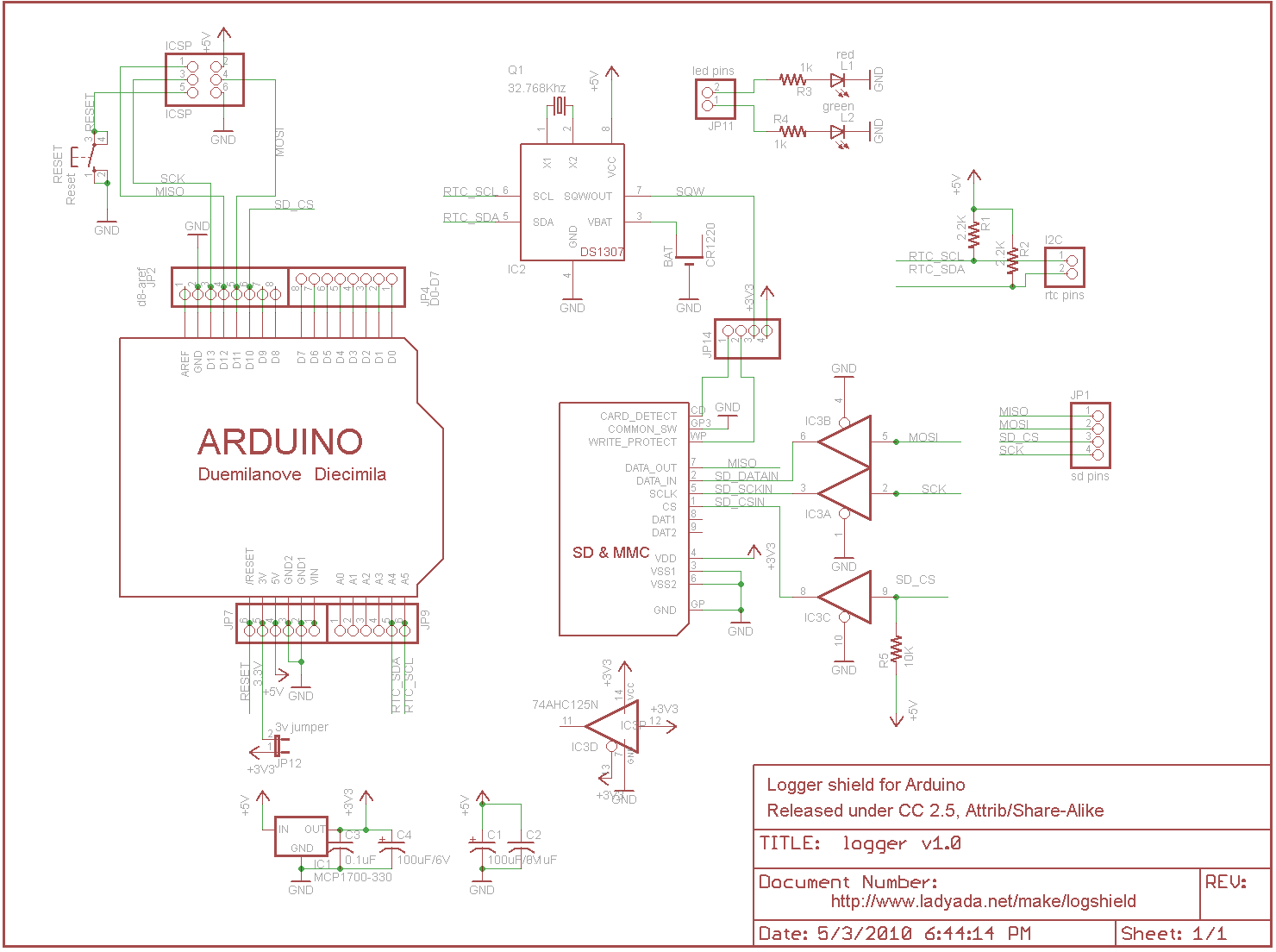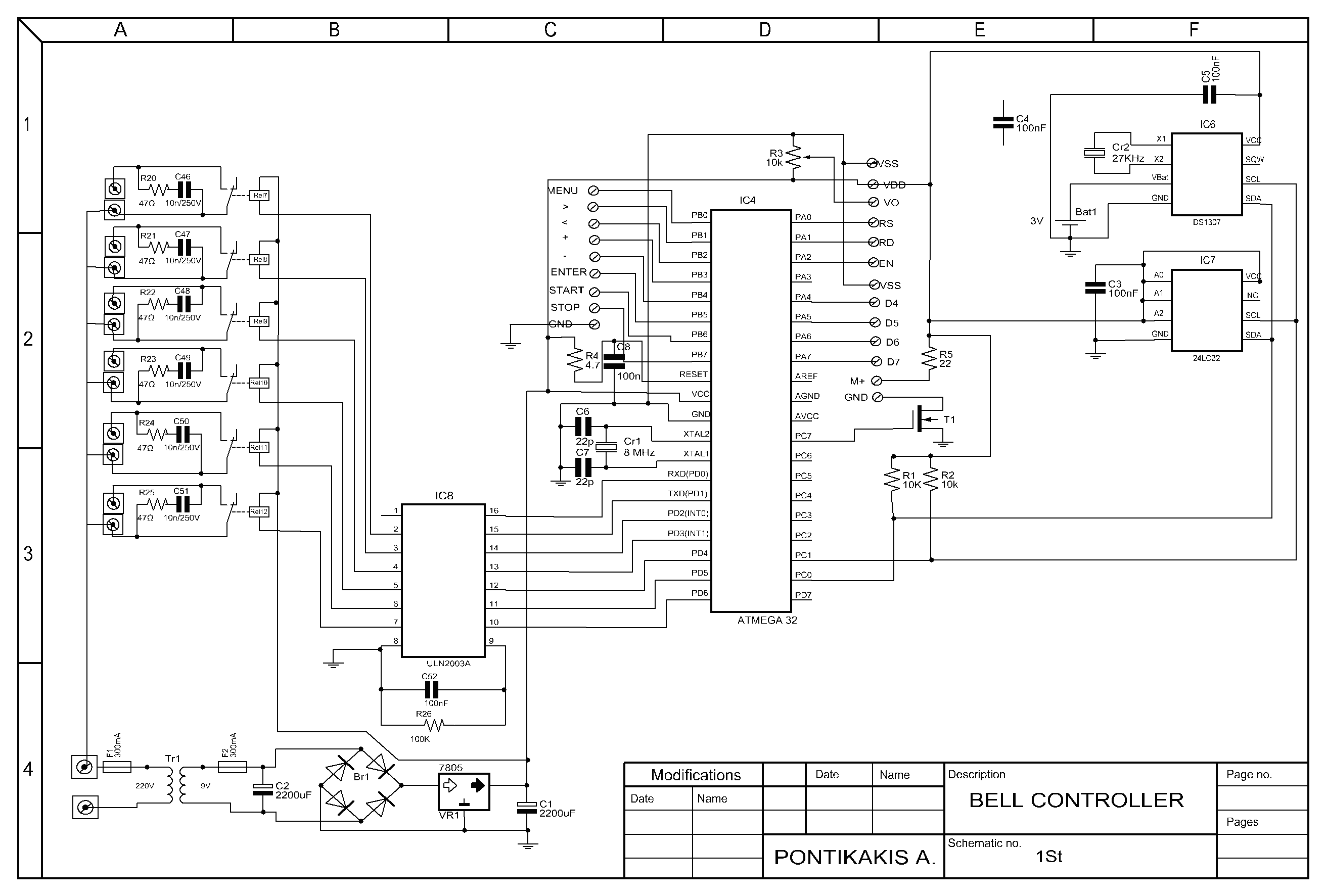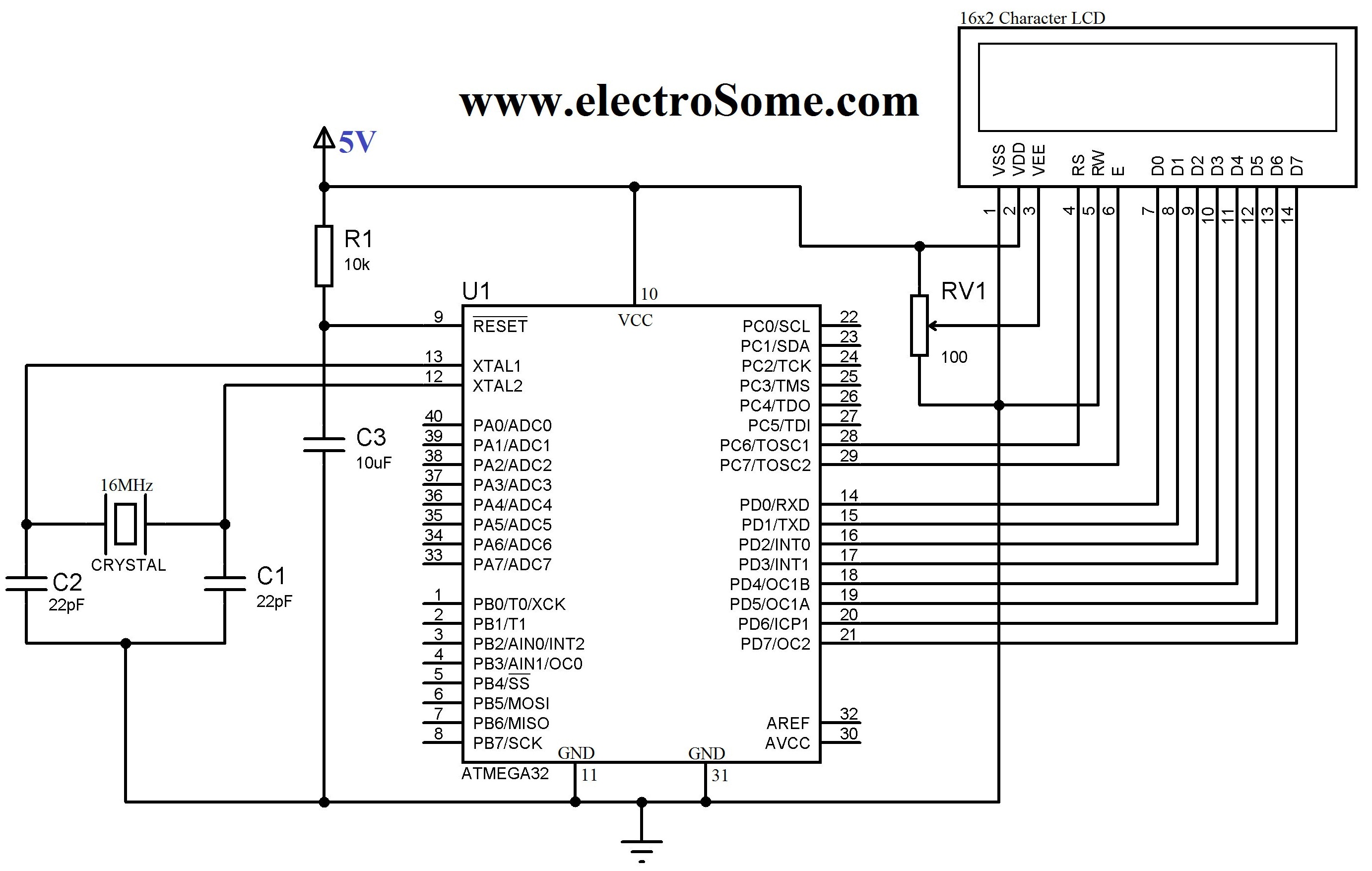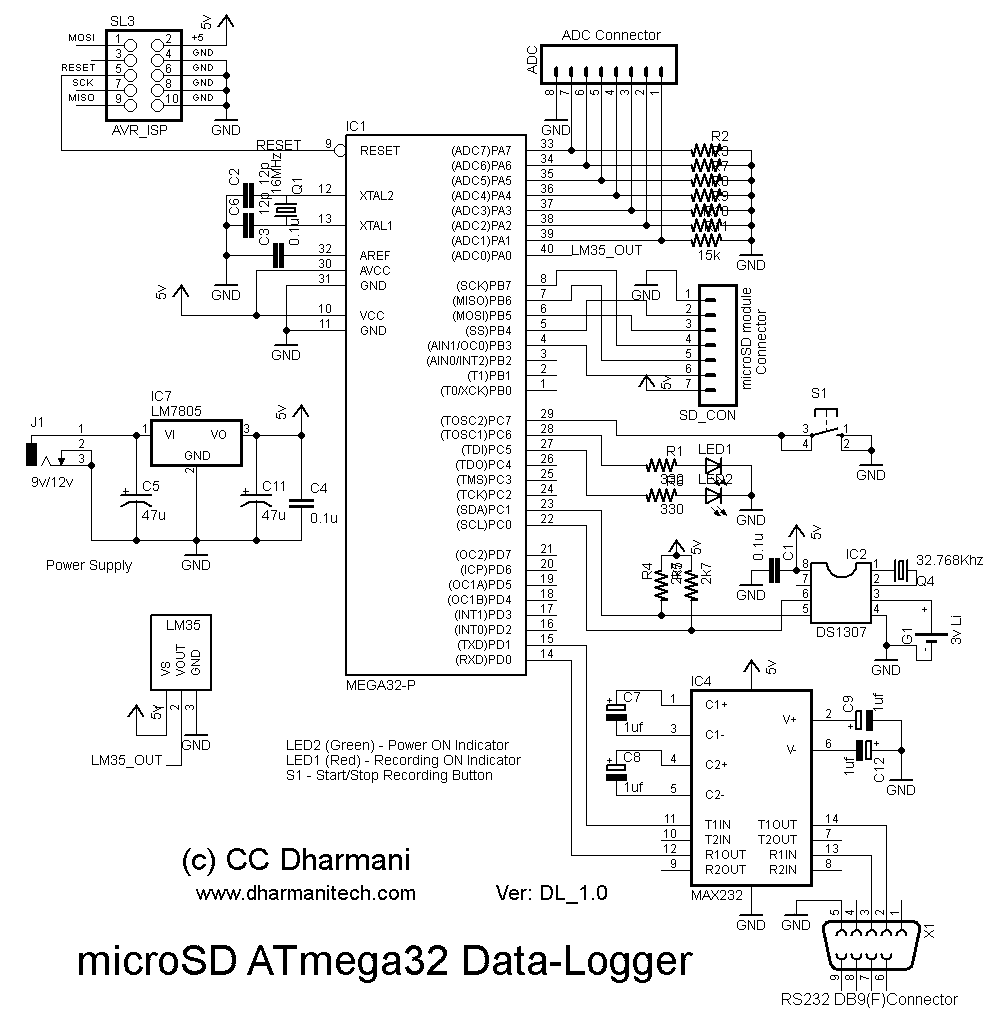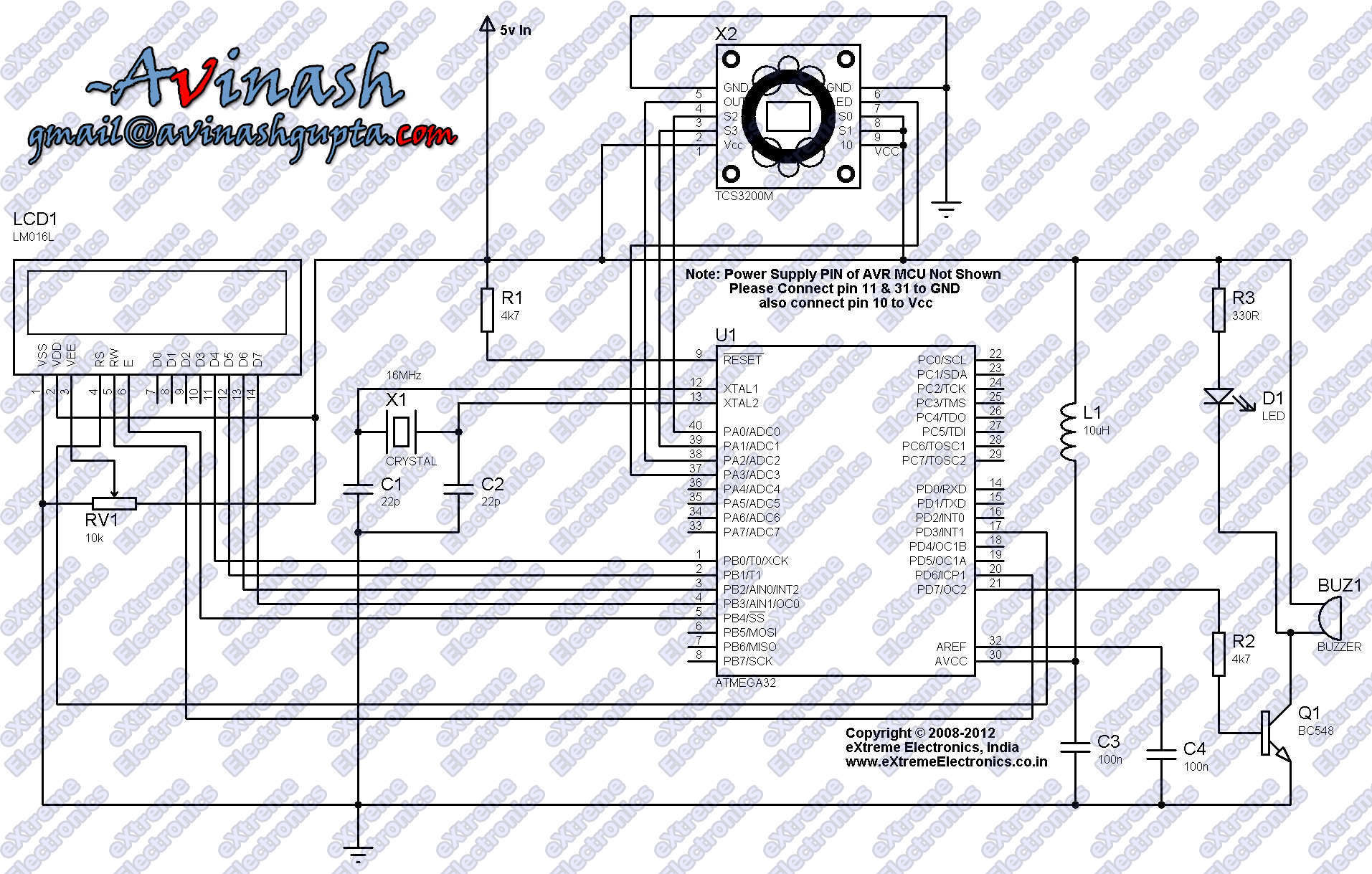
microSD ATmega32 Data-Logger
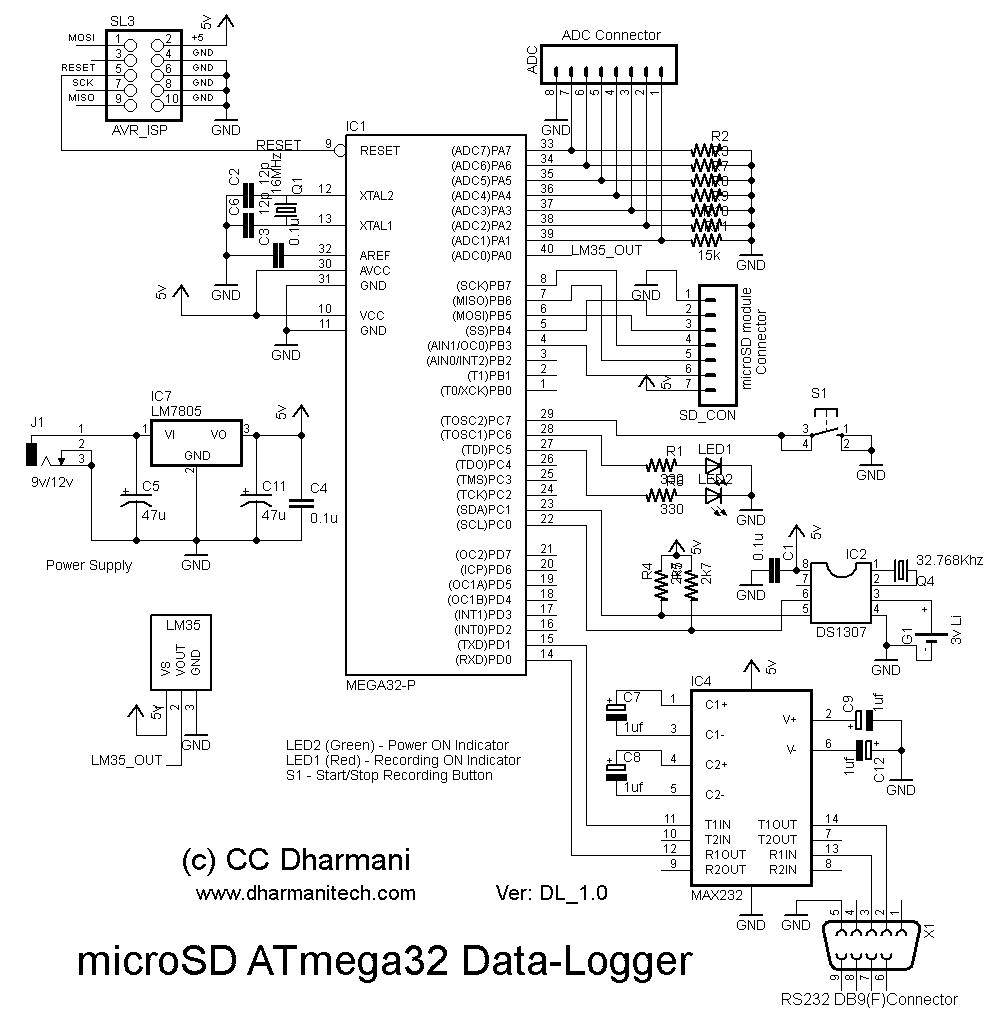
The objective of this project is to demonstrate a method for storing a large amount of data on a microSD card in files formatted with FAT32. The ATmega32 microcontroller is utilized for data collection and interfacing with the microSD card. Data is acquired from the built-in 8-channel ADC of the ATmega32. One channel is dedicated to reading temperature from an LM35 sensor, while the remaining channels are used to read and store various voltage levels. This project can interface with eight different sensors using the ADC of the ATmega32, similar to the LM35 utilized in this setup. The data is stored in CSV (comma-separated values) format, which can be accessed using a PC or laptop with Microsoft Excel or compatible software. A snapshot of the Excel file is provided later in the documentation. This project serves as an example of utilizing the microSD FAT32 library introduced in a previous post. In that instance, files were created using hyper-terminal and data was entered via the PC keyboard, which illustrated file creation and simplified debugging. However, many users requested a method for file creation that operates independently of the terminal, executed within the microcontroller. This document demonstrates how to use those functions autonomously. For those who have arrived directly at this page, it is advisable to review the original post first, as it provides a more foundational understanding of SD or FAT32 functions. The project includes an RTC (Real-Time Clock) interface for date and time storage, RS232 for PC connection, and a microSD module. The hyper-terminal connection is only necessary for setting the RTC date and time. After the date and time are configured, the RS232 connection is no longer required for regular data logging operations, although it can be used for debugging if issues arise. The module depicted includes a microSD socket, an onboard 3.3V regulator for the microSD card, a 5V-3.3V level converter, and additional safety features for the card. This module is selected for its stable interface, ensuring compatibility with the 5V supply and signals from the microcontroller. The schematic also includes two LEDs and a push-button. The LEDs indicate power and recording status, while the push-button is utilized to start and stop the recording process. The operation is straightforward, relying on a single push-button and LED indication. In the event of an error accessing the card, a red LED will blink continuously. In such cases, the circuit can be initiated in debug mode (with terminal) to view error messages. Files are named with the date and have a .CSV extension. For instance, data logged on May 10, 2011, would be stored in a file named "10052011.CSV." Since the date serves as the file name, a single file is created each day, consolidating all data recordings regardless of how many times recording is paused or resumed. The first column of the file displays the date, the second column shows the time, and the next eight columns contain data from the eight channels. A sample file created during testing is illustrated, where measurements were taken at 5-second intervals (clicking on the image enlarges it). In this example, channel-0 was used for the LM35 temperature sensor, while the remaining channels measured voltage. A 5V power supply was connected to channel-1, and a 3V lithium cell was connected to channel-3 (channels 2 and 4 display minor voltages due to noise from adjacent channels, which can be mitigated with bypass capacitors). The interval between measurement cycles is defined in the main.c file and can be adjusted according to user requirements. Essentially, the program constructs a dataString during each measurement cycle and appends this string to the existing file or creates a new file if it is the first recording of the day. Comments in the source code file provide additional information.
The circuit design features an ATmega32 microcontroller at its core, interfacing with an 8-channel ADC to facilitate the collection of data from multiple sensors. The microcontroller is connected to a microSD card module, which handles data storage in FAT32 format. The microSD module is equipped with a voltage regulator and level converter to ensure compatibility with the ATmega32's 5V logic levels.
The LM35 temperature sensor is connected to one of the ADC channels, while the other channels are configured for voltage measurements from various sensors. The circuit includes a Real-Time Clock (RTC) module, which allows for accurate date and time stamps on the stored data. An RS232 interface is integrated for initial setup and debugging purposes, enabling communication with a PC.
LED indicators are incorporated into the design to provide visual feedback on power status and recording activity. A push-button switch allows the user to initiate or halt the data recording process. The recorded data is structured in a CSV format, with the first column indicating the date, the second column for time, and subsequent columns for sensor readings.
The circuit's operation is governed by firmware running on the ATmega32, which manages ADC conversions, data formatting, and file operations on the microSD card. The firmware handles the creation of new files based on the date and appends data strings to existing files as measurements are taken. This modular approach ensures that data logging is efficient and organized, facilitating easy access and analysis through software applications like Microsoft Excel.
Overall, this project exemplifies the integration of microcontroller technology with data storage solutions, enabling versatile sensor applications with user-friendly data management capabilities.Aim of this project is to present a way to store a large quantity of data into microSD card in files with FAT32 format. Here, ATmega32 is used for data collection and microSD interface. The data is received from in-build 8-channel ADC of ATmega32. One channel is used for reading temperature from LM35 sensor and remaining channels are used for simp
ly reading voltages and storing them. This project can be used to interface 8 different sensors with ADC of ATmega32, similar to the LM35 used here. The data is stored in CSV (comma separated values) format, which can be read using a PC/Laptop with Microsoft Excel or other compatible software.
A snapshot of the excel file is given later in this post. This project is an example of how to use the microSD FAT32 library presented in my earlier post. In that post, the files were created using hyper-terminal and entering data with the PC keyboard, since that demonstrates the file creation and it`s easy to debug. But many users have requested to make the file creation independent of the terminal, done inside the microcontroller, so I`m showing here how to use those functions independent of terminal.
If you have directly landed on this page, it would be more helpful if you visit the original post first as it would be a better starting place for learning SD or FAT32 functions. The project contains RTC interface (for date and time storage), RS232 (for connection with PC) and a microSD module.
Here, the hyper-terminal connection is required only for setting RTC date and time. Once the date/time are set, the RS232 connection is not required anymore for normal data-logging operation (It can be used for debugging purpose if there is a problem). The module is shown in the figure here. Other than the microSD socket, this low-cost module also contains on-board 3. 3v regulator for the microSD card, a 5v-3. 3v level converter and other safety features required for the card. This module is used here as it provides a stable interface and makes the the card compatible with 5v supply and 5v signals of microcontroller.
The schematic also shows two LEDs and a push-button. The LEDs are used for indications of power and recording and the push-button is used to start-stop recording. The operation is very simple as it uses just one push-button and an LED indication. In case of any error in accessing the card, red LED will blink continuously. In such a case, you can start circuit in debug mode (with terminal) and see the error messages. Files are stored with the date as a name and. CSV extension. For example, data-logging done on 10 May 2011 would be stored in "10052011. CSV" file. Since the date is the name of file, everyday a single file is created and all the data recording done in a day goes into single file, no matter how many times the recording is stopped/started.
First column of the file shows date, second shows time and next 8 columns show data from the 8 channels. A file created during testing is shown in the figure below, where 5 sec interval was set for measurements (click on the image to enlarge it).
Here channel-0 was used for LM35 temperature sensor, and remaining channels measure voltage. 5v was connected to channel-1 and 3v Li cell was connected to channel-3 (Channel 2 & 4 show some small voltages due to noise from voltages connected to nearby channels, which can be corrected by using bypass caps). The interval between two measurement cycles is defined in main. c file, which can be set as per the user requirement. Basically, the program forms a dataString in every measurement cycle and appends this string to the file, if the file already exists or it creates a new file (for example, during the first recording in a day).
You may go through the comments in the source code file for more info. 🔗 External reference
The circuit design features an ATmega32 microcontroller at its core, interfacing with an 8-channel ADC to facilitate the collection of data from multiple sensors. The microcontroller is connected to a microSD card module, which handles data storage in FAT32 format. The microSD module is equipped with a voltage regulator and level converter to ensure compatibility with the ATmega32's 5V logic levels.
The LM35 temperature sensor is connected to one of the ADC channels, while the other channels are configured for voltage measurements from various sensors. The circuit includes a Real-Time Clock (RTC) module, which allows for accurate date and time stamps on the stored data. An RS232 interface is integrated for initial setup and debugging purposes, enabling communication with a PC.
LED indicators are incorporated into the design to provide visual feedback on power status and recording activity. A push-button switch allows the user to initiate or halt the data recording process. The recorded data is structured in a CSV format, with the first column indicating the date, the second column for time, and subsequent columns for sensor readings.
The circuit's operation is governed by firmware running on the ATmega32, which manages ADC conversions, data formatting, and file operations on the microSD card. The firmware handles the creation of new files based on the date and appends data strings to existing files as measurements are taken. This modular approach ensures that data logging is efficient and organized, facilitating easy access and analysis through software applications like Microsoft Excel.
Overall, this project exemplifies the integration of microcontroller technology with data storage solutions, enabling versatile sensor applications with user-friendly data management capabilities.Aim of this project is to present a way to store a large quantity of data into microSD card in files with FAT32 format. Here, ATmega32 is used for data collection and microSD interface. The data is received from in-build 8-channel ADC of ATmega32. One channel is used for reading temperature from LM35 sensor and remaining channels are used for simp
ly reading voltages and storing them. This project can be used to interface 8 different sensors with ADC of ATmega32, similar to the LM35 used here. The data is stored in CSV (comma separated values) format, which can be read using a PC/Laptop with Microsoft Excel or other compatible software.
A snapshot of the excel file is given later in this post. This project is an example of how to use the microSD FAT32 library presented in my earlier post. In that post, the files were created using hyper-terminal and entering data with the PC keyboard, since that demonstrates the file creation and it`s easy to debug. But many users have requested to make the file creation independent of the terminal, done inside the microcontroller, so I`m showing here how to use those functions independent of terminal.
If you have directly landed on this page, it would be more helpful if you visit the original post first as it would be a better starting place for learning SD or FAT32 functions. The project contains RTC interface (for date and time storage), RS232 (for connection with PC) and a microSD module.
Here, the hyper-terminal connection is required only for setting RTC date and time. Once the date/time are set, the RS232 connection is not required anymore for normal data-logging operation (It can be used for debugging purpose if there is a problem). The module is shown in the figure here. Other than the microSD socket, this low-cost module also contains on-board 3. 3v regulator for the microSD card, a 5v-3. 3v level converter and other safety features required for the card. This module is used here as it provides a stable interface and makes the the card compatible with 5v supply and 5v signals of microcontroller.
The schematic also shows two LEDs and a push-button. The LEDs are used for indications of power and recording and the push-button is used to start-stop recording. The operation is very simple as it uses just one push-button and an LED indication. In case of any error in accessing the card, red LED will blink continuously. In such a case, you can start circuit in debug mode (with terminal) and see the error messages. Files are stored with the date as a name and. CSV extension. For example, data-logging done on 10 May 2011 would be stored in "10052011. CSV" file. Since the date is the name of file, everyday a single file is created and all the data recording done in a day goes into single file, no matter how many times the recording is stopped/started.
First column of the file shows date, second shows time and next 8 columns show data from the 8 channels. A file created during testing is shown in the figure below, where 5 sec interval was set for measurements (click on the image to enlarge it).
Here channel-0 was used for LM35 temperature sensor, and remaining channels measure voltage. 5v was connected to channel-1 and 3v Li cell was connected to channel-3 (Channel 2 & 4 show some small voltages due to noise from voltages connected to nearby channels, which can be corrected by using bypass caps). The interval between two measurement cycles is defined in main. c file, which can be set as per the user requirement. Basically, the program forms a dataString in every measurement cycle and appends this string to the file, if the file already exists or it creates a new file (for example, during the first recording in a day).
You may go through the comments in the source code file for more info. 🔗 External reference
